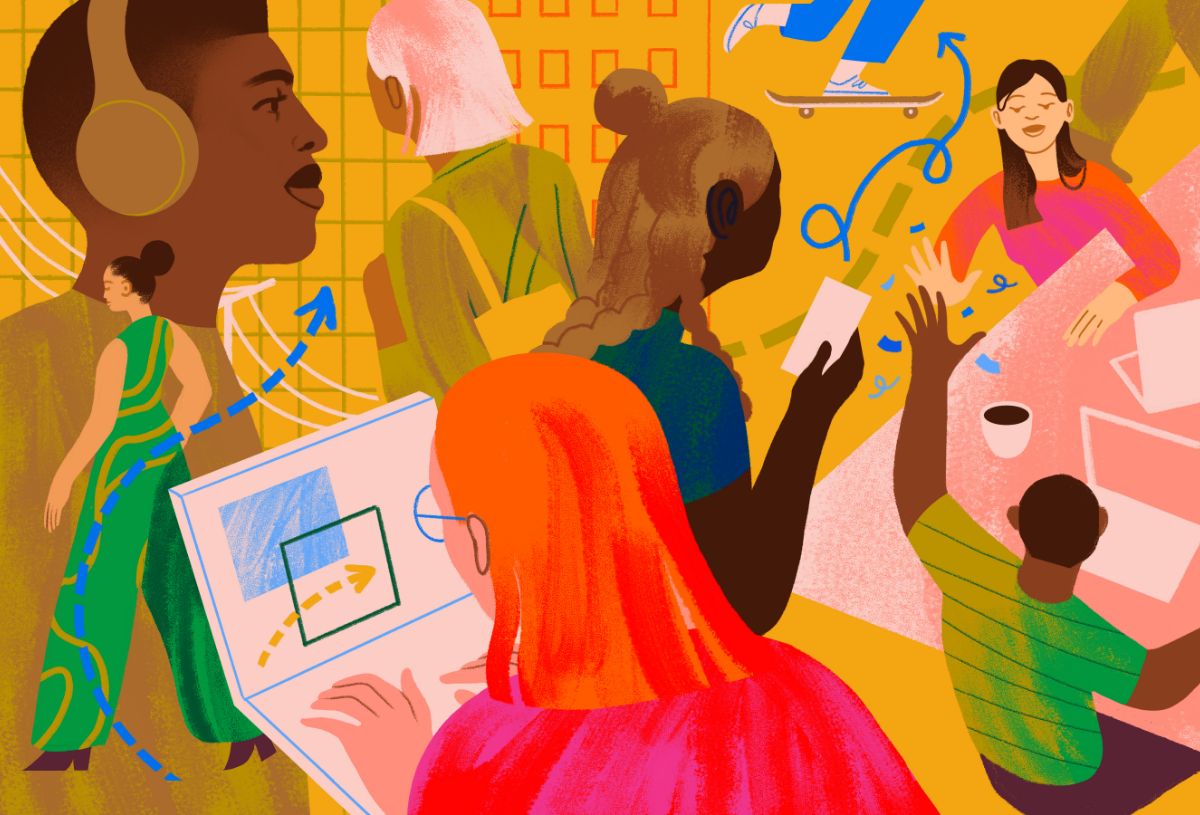How to Build a More Inclusive Workplace Culture

Updated on
October 3, 2025
3
October
2025
Workplace culture took some major hits over the past two years. New challenges forced organisations and human resources leaders worldwide to play defence in ways they could not have predicted. The global pandemic, the rise of remote work and its accompanying disconnection, the Great Resignation, and a global cry for more diversity and inclusion—all contributed to reshaping company cultures.
Amid these ongoing disruptions, how can organisations create more inclusive workplace cultures that help employees reconnect with their organisations and one another? Employees say they want employers who respect their diversity. Yet our research through this period surfaced uncertainty and skepticism about inclusion efforts. Only 44% of employees said their company’s diversity and inclusion efforts seemed sincere. Even fewer, 34%, felt efforts were effective or believed inclusion was part of their culture.

Why diversity does not equate to inclusion
Diversity is about the number of different kinds of employees that make up an organisation based on race, gender, age, sexual orientation, disability, and many other factors. In contrast, inclusion is a measure of how well each of these groups that make up a diverse workforce are valued and represented.
Great Place to Work® explains it this way: “Diversity is about representation or the make-up of an entity. Inclusion is about how well the contributions, presence, and perspectives of different groups of people are valued and integrated into an environment.”
A study by the same organisation found that when employees trust that they will be treated fairly regardless of race, gender, sexual orientation, or age, they are:

LMF Network founder Sonya Barlow calls Diversity, Equity & Inclusion the holistic approach one can take to ensure complete belonging in the workplace or any given environment. Creating diverse teams and implementing inclusion efforts calls for thoughtful planning. Achieving meaningful inclusion requires an investment in leadership, education, and workplace culture.
Studies have demonstrated that organisations with diverse and inclusive cultures deliver dramatically better results.
Inclusive organisations not only benefit by employees feeling more welcome and valued, but they also enjoy better performance. For many years, in multiple countries, studies have demonstrated that organisations with diverse and inclusive cultures deliver dramatically better results.
Keep reading for five tips for leaders on how to build a more inclusive workplace culture.

1. Learn to speak inclusively
Sometimes the way employees feel is a reflection of how they are treated or spoken about. Whether intended or not, people may convey an unconscious bias through everyday work conversations. That’s why one of the first tips for an inclusive workplace is to learn to speak inclusively.
Without thinking about gender, someone may refer to an employee as a salesman or businessman. The more inclusive terms would be salesperson or business executive. Similarly, a coworker could use terms like homosexual or transsexual. Better options would include gay, transgender, or LGBTQ+. And instead of referring to a group broadly as minorities, a more appropriate option would be to refer to them specifically by their appropriate name (African American, Native American, Hispanic, etc.).
Small, but deliberate improvements in the way we speak to each other can go a long way in creating feelings of inclusion at work—and help create an atmosphere where everyone can feel welcome.
2. Focus on everyday micro-experiences
Make deliberate efforts to implement inclusive workplace practices and educational opportunities throughout the work environment. This may take the form of more improved hiring practices, employee bias training, special town hall events, community collaboration, and policies for equal pay.
O.C. Tanner suggests creating programs with a purpose and ensuring they are embraced. Plans should include measurable goals and provide resources, tools, and training to help all employees feel more included. When inclusion is treated as an intentional priority, it will become part of the culture.
To make recognition more equitable across the globe and inclusive of all their employees, including their offline production employees, 3M worked with O.C. Tanner to create a centralised, unified employee recognition platform. “We worked hand-in-hand with O.C. Tanner to ensure all employees had access to Everyday Wins, which is often the single biggest barrier. Our office employees had computers, but for many of our production employees, we created kiosks so they could access the program,” explains their Total Rewards and Recognition Program Manager. They also utilised a mobile app and integrated Everyday Wins into Outlook, which production employees use daily. This enables all employees to feel more appreciated and included at work.
When inclusion is treated as an intentional priority, it will become part of the culture.
Citi, as another example, actively seeks out diverse perspectives at all levels of their organisation. The company champions a set of inclusion goals that spans pay equity, Citi Affinity groups, LGBTQ+ equality and rights, disability inclusion, as well as targeted recruiting and promotional paths.
However, inclusive behaviours in the workplace aren’t always formal programs. Research at the O.C. Tanner Institute shows that the employee experience is comprised of frequent micro-experiences like the conversations people have with their teams, the environments in which they work, the messages they get from their company, and the feedback and recognition they receive from their peers and leaders. It’s these everyday experiences that cumulatively help employees feel like they belong and are important to the organisation and the workplace culture.

3. Teach leaders how to model inclusion
It’s hard for organisations to say they promote diversity and inclusion when their management teams lack diversity or are insensitive to diverse populations. To create a safe, inclusive environment, leaders should promote inclusivity by practicing what they preach. When leaders understand the importance of modeling inclusion, teams stand a much better chance of finding success as well.
Organisations should encourage leaders to become aware of others’ diverse experiences, skills, perspectives, and personalities. Then they can create an environment where each employee feels that they belong and can apply their uniqueness to enhance culture and achieve common goals and objectives.
Kaiser Permanente was recognised for diversity and inclusion practices in hiring, retaining, and promoting diverse employees (women, Black, Indigenous and people of colour, veterans, people with disabilities, and members of the LBTQIA+ community). “The company attributes its success to having leadership teams model inclusive behaviour, promoting a ‘speak up’ culture and encouraging employees to ‘lead from where they stand,’ thereby giving everyone a voice and a platform to enact change.”7
4. Build a culture of inclusion through recognition
Employee appreciation serves as a powerful tool to build inclusion for all employees at an organisation. Employee recognition programs like Culture Cloud Recognition from O.C. Tanner are designed to help all employees feel recognised for their work.
While gathering data for our Global Culture Report, we looked at different groups of people to find out if they felt that recognition was embedded in their culture.We found that employees were 39% less likely to feel that recognition was part of the culture, while female employees were 34% less likely to feel that way. This leaves much room for improvement for organisations to build a culture of recognition.
POC employees were 39% less likely to feel that recognition was part of the culture, while female employees were 34% less likely to feel that way.
To improve, leaders can review which groups are being recognised, which groups are not, and then make adjustments. Forbes reports that by analyzing recognition data, employers can see how their recognition practices are being used across different groups of employees. “A company may learn that it’s not recognising women as often as men, or that one division is being recognised more than another, which gives them an opportunity to step back, ask why, and then take corrective action.”
5. Create feelings of belonging so employees want to stay
Creating an inclusive workplace culture works hand in hand with cultivating a sense of belonging at work. Harvard Business Review notes that “when companies emphasise a culture of belonging, they…build a bridge to greater empathy and inclusion for the groups that are the most marginalized in the workplace today.”
Helping people feel like they belong also helps organisations keep employees longer. One study found that 54% of employees who left their job in the past six months did not feel valued by their organisation, and 51% lacked a sense of belonging, concluding that “employees want stronger relationships, a sense of connection, and to be seen.”
Belonging at work is also crucial for remote and hybrid workers as well. The report further details that employers “must be deliberate about cultivating deeper team relationships and creating an inclusive, purposeful experience for people, regardless of where they are working.”

Reap the benefits of inclusive culture in the workplace
Leaders who promote inclusivity initiatives can help employees look forward to going to work, increase their productivity, and help them want to stay with the organisation longer. In the wake of the challenges like the Great Resignation, employees may choose to remain loyal to their employers longer when they feel that the organisation sees and represents them.
O.C. Tanner develops ongoing research reports on the trends, statistics, and perceptions that are shaping workplace cultures around the world. Learn more at octanner.com.



